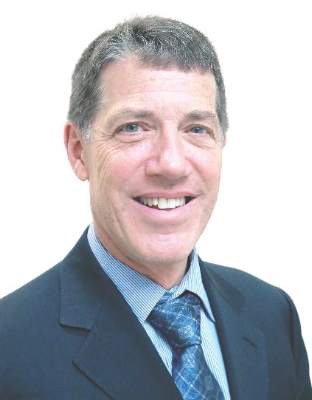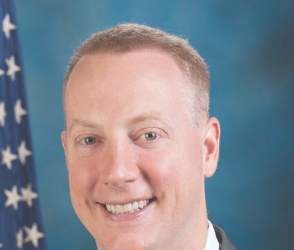EXPERT ANALYSIS FROM AACE 2016
ORLANDO (FRONTLINE MEDICAL NEWS) – In the case of transgender youth and adults – those with what is now called gender dysphoria – physicians are faced with treating individuals who generally have no physical disease or abnormalities.
Endocrinologists are the professionals who are often tasked with the medical aspects of treating gender dysphoria. In an effort to help them understand the underpinnings and aspects of the conditions, Dr. Stephen Rosenthal , professor of pediatrics and medical director of the Child and Adolescent Medical Gender Center at the University of California, San Francisco, reviewed current knowledge about the biological basis for gender identity, current treatment models, and barriers to care of patients with gender dysphoria.
Speaking at the annual meeting of the American Association of Clinical Endocrinologists, Dr. Rosenthal said the dysphoria derives from the significant emotional distress that may be associated with a transgender identity, essentially from the social and psychological pressures of being born and living in a body (the “natal sex”) that does not match an individual’s gender identity, defined as one’s fundamental sense of self as male or female. “It’s not always limited to those two choices, and it’s not always binary,” he said, since individuals may identify with aspects of both or, at times, neither gender.
He defined some terms, such as transgender, which refers to a transient or persistent identification with gender different from the one others assume based on physical sex characteristics at birth. That gender becomes the one of rearing, which may not be how the individual feels growing up. Gender identity should not be confused with sexual identity or orientation because people of any gender can have any sexual orientation.
“Gender Identity Disorder,” a term used in the DSM IV (Diagnostic and Statistical Manual of Mental Disorders IV) has been replaced by “Gender Dysphoria in Children” in DSM 5. And even that term may be revised since transgender identity in itself is not a pathology.
In one survey of 28,176 people, 0.5% self-identified as transgender. Another survey showed statistically significant risks associated with being transgender. Comparing 180 transgender youth with 180 non–transgender youth (average age, 19.6 years; range, 12-29 years), researchers found a two- to threefold increased risk of depression, anxiety disorder, suicidal ideation, suicide attempt, and self- harm without lethal intent among the transgender youths. Parental support helped alleviate some of these risks, especially suicide attempts, but did not eliminate them entirely; that support also contributed to better mental and physical health, improved self-esteem, and even adequate food and housing for transgender adolescents.
Clues to biological influences
A complex interplay of biological, environmental, and cultural factors affect the determination of gender identity. Evidence points to the role of biology in gender identity development through studies of genetics, hormones, and the brain, but none of these is a “litmus test” for gender identity, Dr. Rosenthal said.
A study of 23 monozygotic twin pairs, 21 same-sex dizygotic twin pairs, and 7 opposite-sex twin pairs showed a 39.1% concordance for gender dysphoria among the monozygotic twins but none for the other sets.
Most transgender individuals do not have any obvious disorder of sexual development, but that is not to rule out a role of prenatal or postnatal androgens (specifically enzymes of the steroid pathways), androgen insensitivity, or extragonadal sources of androgen, as in congenital adrenal hyperplasia (CAH). Among 250 46XX females with CAH raised as female, 5.2% had male gender identity or gender dysphoria (a 10- to 20-fold increased risk vs. controls), suggesting a possible role for prenatal androgens in gender identity development.
A neurobiological basis for transgender is supported by some studies of sexually dimorphic brain structures but is by no means conclusive. Numerous studies of gray and white matter showed that sexually dimorphic structures are more closely aligned with gender identity than with physical sex (even before cross-sex hormones have been applied). But morphometry on areas of the brain that show the largest sex differences found that variability was more prevalent than was consistency in the 1,400 brains studied.
Tests of “functional sexual dimorphism” used PET or MRI to measure changes in regional blood flow in the anterior hypothalamus when control adolescent girls or boys or those with gender dysphoria were asked to smell substances containing pheromones of the opposite sex (for girls: androstadienone in a mixture of male sweat and semen; for boys: estrogen-like compounds in urine of pregnant women). Both girls and boys with gender dysphoria had responses significantly different from those of their respective controls.
Natural history of gender dysphoria
Dr. Rosenthal said symptoms of gender dysphoria in prepubertal children decrease or disappear in 70%-95% of cases, but if they persist into early puberty, the individual is likely to be transgender as an adult. Children with more intense gender dysphoria and those who believed they “were” the opposite sex were more likely to have persistent gender dysphoria as adults. In a study based on parents’ completed measures, prepubescent transgender boys and girls who have socially transitioned had depression scores no higher than those of matched nontransgender controls. They had much lower anxiety and depression, compared with non–socially transitioned transgender historical control children.
Medically induced sexual transitioning
For pediatric and adolescent transsexual patients who express a desire to transition to the opposite sex, an Endocrine Society clinical practice guideline on endocrine treatment recommends that a mental health professional make the diagnosis of gender dysphoria. Then the medical provider needs to ensure that the patient understands the consequences of hormone suppression and cross-sex hormone therapy prior to beginning treatments. Only after early puberty has begun should gonadotropin-releasing hormone (GnRH) agonists be used to suppress pubertal hormones. At about age 16 years, cross-sex hormone treatments can begin, with surgery deferred at least until age 18 years if the patient desires full transitioning.
A Dutch study ( Pediatrics. 2014 Oct. 134:696-704 ) showed that after gender reassignment, in young adulthood, gender dysphoria “was alleviated and psychological functioning had steadily improved. Well-being was similar to or better than same-age young adults from the general population.” No patients reported any regret during any stages of the sex-reassignment protocol.
There is some concern about adverse effects of the GnRH agonists, such as on bone mass and health, the brain, and fertility. But no detrimental effects were observed in a study on executive functioning, which undergoes significant development during puberty, in either male-to-female or female-to-male individuals.
Future parenthood may be an option if the patient is old enough. “We always encourage them to either freeze sperm, or we can potentially freeze eggs before embarking on phenotypic transition,” Dr. Rosenthal said. But allowing a patient to get to a stage of spermatogenesis or egg production would allow puberty to proceed to a significant degree. “So one of the exciting areas of research is actually taking prepubertal tissue … [in mice] they took neonatal testicular tissue and they basically showed you could take it all the way through the steps of full maturation and get progeny that were reproductively competent,” he said. Similar studies are being done in humans, mainly because there is interest in preserving fertility of children undergoing cancer treatments.
Barriers to care for transgender youth include limited access to medications, including off-label use, great expense, and insurance company denials of reimbursement. There are also relatively few clinical programs and a lack of training for health care professionals, as well as prejudice and misunderstanding, even among professionals.




